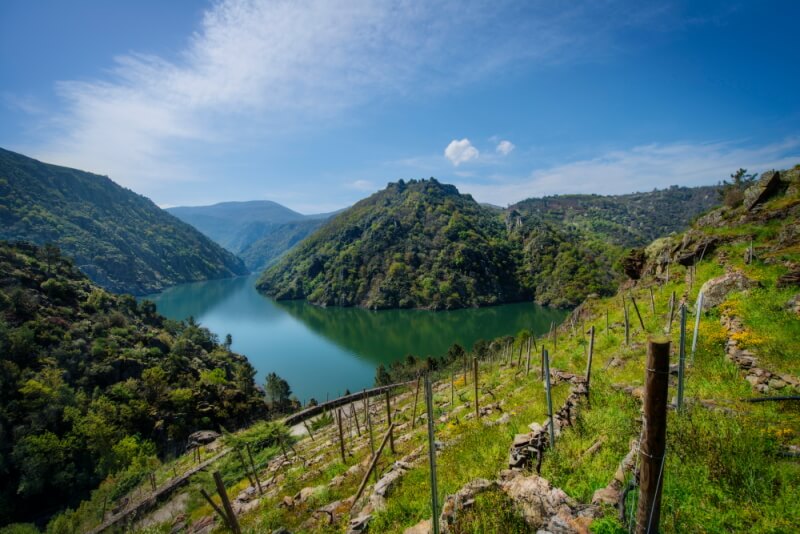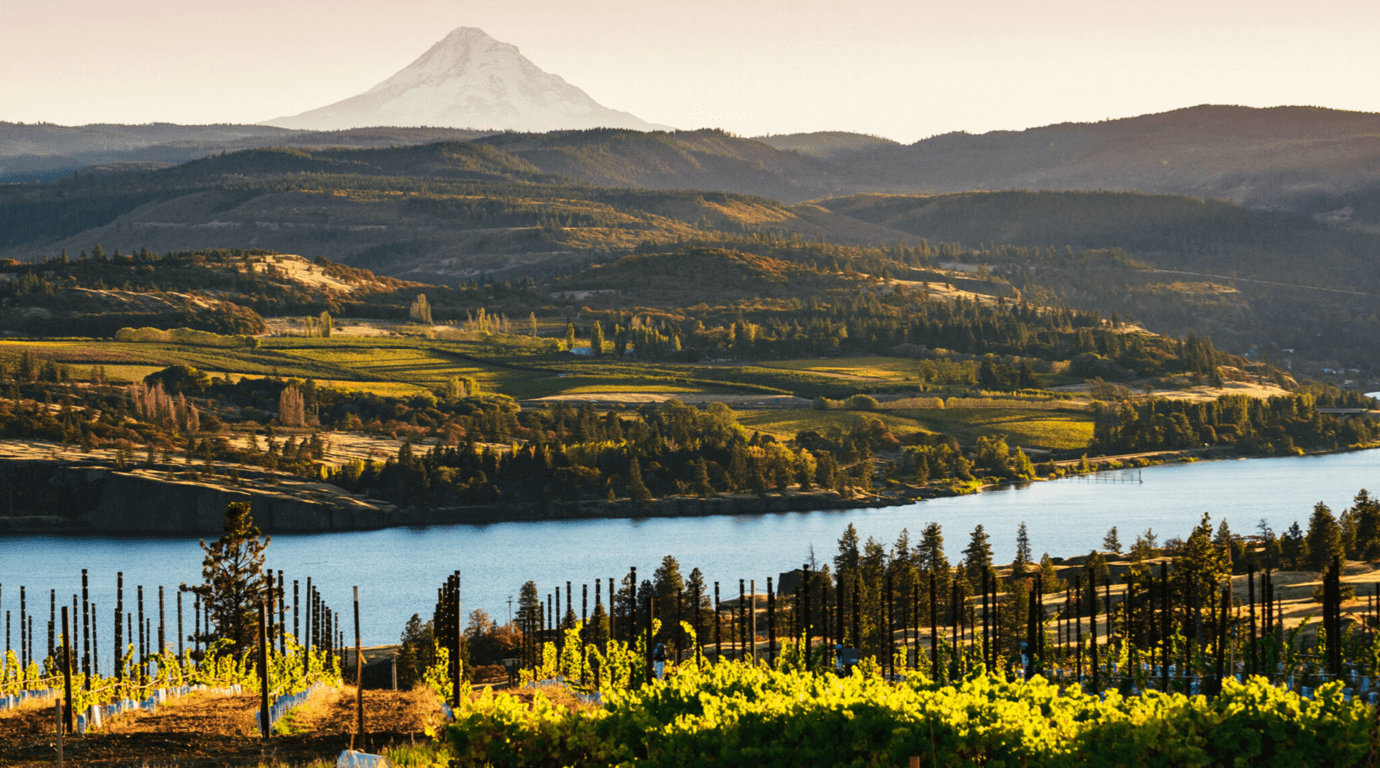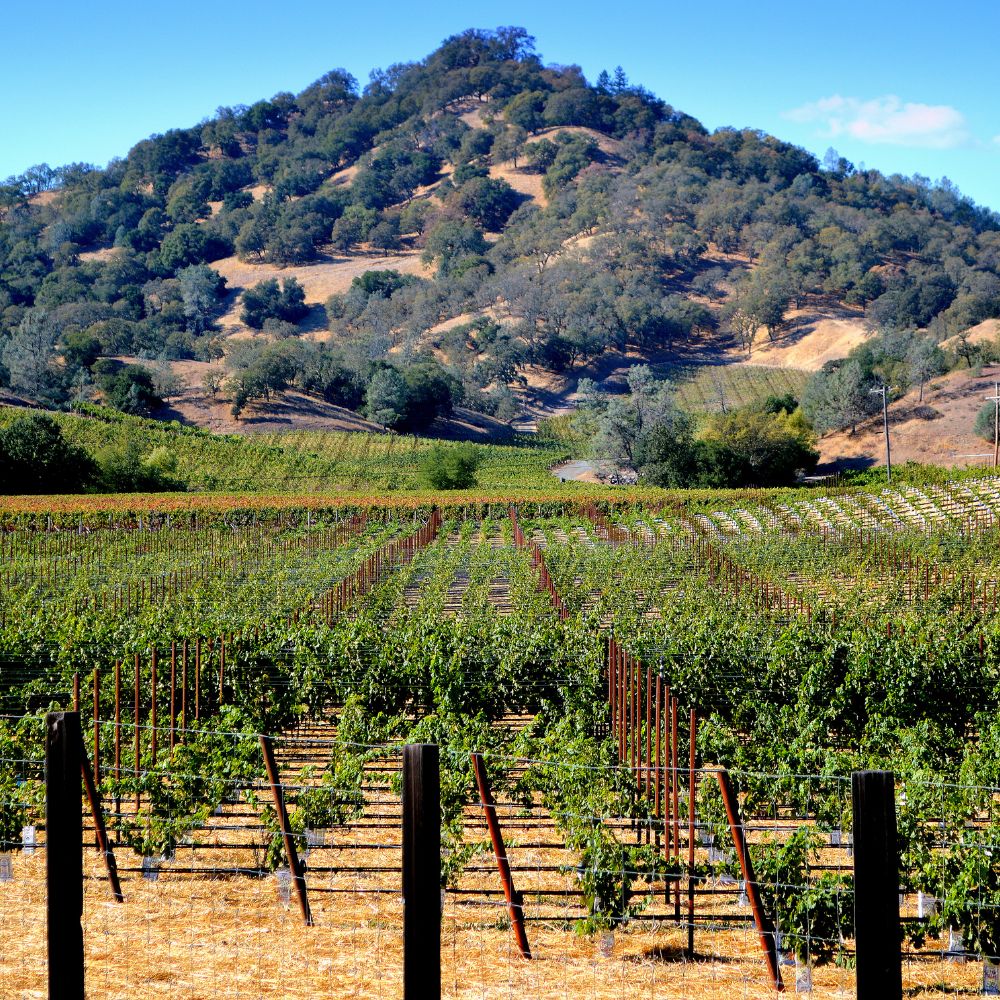It began in the Middle Ages, after the discovery of the relic of St James led to the founding of his shrine in Santiago de Compostela. Monasteries sprang up along the Camino to provide food and shelter for pilgrims. It was the monks who established vineyards to provide wine.
This far north, viticulture continued unimpeded by the Moors’ occupation, until disease – in the form of Phylloxera – brought devastation towards the end of the 19th century.
The rush to replant afterwards led to Palomino – the main white grape for Sherry – and Garnacha Tintorera (aka Alicante Bouschet) being widely planted. Galicia’s patrimony of indigenous grapes was mostly forgotten. These days the old local varieties are on the up.

Vineyards in Rias Baíxas
The re-discovery of Albariño in the coastal Rias Baíxas area in the early 80s kick-started the recovery of Galician wine. Rioja producers, keen to find a fresh, aromatic alternative to oaky white Rioja, were quick to pile in. Their investment and expertise spurred development of the region. Once Spain joined the E.U. in 1986, the region changed its name from D.O. Albariño to D.O. Rias Baíxas.
It’s been very successful – putting North West Spain on the map with a grape most people now recognize – and like, and can just about pronounce. Rias Baíxas has become Galicia’s wine engine producing 80% of all Galician wine.
You could add the production of all of the rest of Galicia’s smaller wine regions together and it would only amount to 20% of what Rias Baíxas makes.
But it’s that 20% – composed of the tiny regions of Ribeiro, Ribeira Sacra and Valdeorras that has radically changed the world’s perception of Spain’s ability to create world class white wines and fresh reds.

Cies Islands in Galicia
To find them you’ll need to leave Galicia’s exquisite sandy beaches behind (think Cornwall but with mostly better weather, and wonderful, plentiful, affordable food and wines) and prepare for a voyage through the “land of a thousand rivers” – deep granite-sided canyons, carved through steep slopes planted with little plots of vines – or plots strewn across the mountains and valleys of Valdeorras.
As you climb the road from the coast towards the Ribeiro region you start to see chunky granite outcrops disrupting the lush green landscape. Ribeiro is bisected by three rivers and sprinkled with small rounded, valleys which trap heat – the best of them in the Avia region where Coto de Gomariz are based. This little region was exporting its wines to England in the 14th century.

Travel on another hour and a half, climbing slowly up to the little town of Monforte – capital of Ribeira Sacra and stay in the Parador – an old monastery on top of a hill overlooking the town. Open the windows in the old rooms and you’ll find the walls are almost a metre deep.

Parador de Monforte de Lemos
Just 20 minutes’ drive south of Monforte, down several scary hairpin bends, brings you down to the Parada De Sil at river level – here your journey continues in a small boat. The river gorge is deep and silent, the water almost still.

River Sil Canyon, Parada de Sil
The first sense is of calm and utter peace. If you’re lucky you might hear and see red kites flying above you.
Vineyards on impossibly steep slopes line the north bank facing south – you’ll need to lie on the floor of the boat to capture the angle. It is a special place – now recognised as an area of Heroic Viticulture and a candidate for a Unesco World Heritage site.
Nowhere else in Galicia is there such a palpable sense of wine’s history – evident in the mosaic of tiny plots of bush vines that line the slopes. Here Napoleonic inheritance laws have ruled – ensuring everyone got a share meant progressively tinier plots – little wonder so many emigrated in search of a more sustainable life.
This is Godello and Mencía country and two bodegas have put the region right back on the map Algueira and Dominio do Bibei. While most of the production is red here, the region produces one of the loveliest Godello-based wines in Spain.

Leaving Monforte to head east towards Valdeorras the road winds gently down through green valleys until you reach the little town of A Rúa, where Rafael Palacios – the youngest of the Palacios siblings and king of white wines, has his winery.

Rafael Palacios vineyards
It’s a 20-minute drive up into the Bolo valley to reach his vineyards at nearly 800 metres. From the top of the Bolo Valley you can see the Bibei River below and the southern edge of Ribeira Sacra on the opposite side. The vines for Louro are planted on the north side of valley facing south. On the south side facing north, lie the six little plots that makeup As Sortes. Walk across the road and up just a few yards and you can feel the extra degree of cool breeze and see the mica in the soil. This is O Soro – Rafa’s tiny single vineyard wine in the coolest spot.

The vineyards are part reclaimed dry-stone walled terraces on the south facing side of the Valley and scattered tiny plots of bush vines on the north facing side.
For me, this remote corner of Spain remains the most enchanting – as much for the extraordinary scenery as for the perfection of its wines and the quality of the food. These are wines for Burgundy lovers – textural complex whites and lithe fresh reds – all with the granite bedrock giving them a freshness and drinkability not equaled anywhere else in Spain.
If you visit – take the advice of one of our wine merchants; unless you have a gargantuan appetite always opt for a tapa or media ración portion at most – Galician food is some of the very best in Spain but their portions are huge!




Comment
Wonderful article with brilliant photos, thank you!